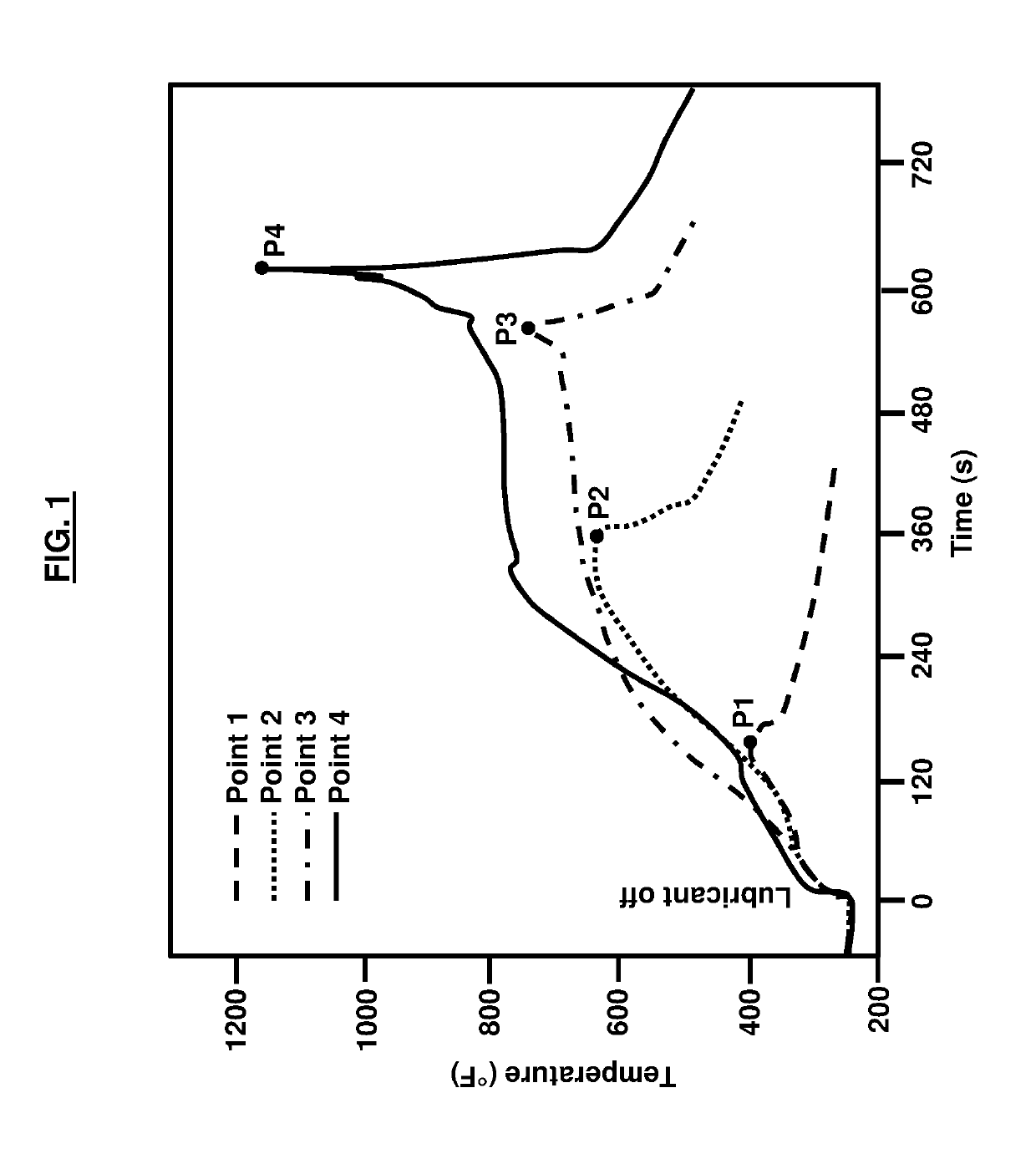Detecting and predicting mechanical failure due to lubrication loss in machines and movable components
- Summary
- Abstract
- Description
- Claims
- Application Information
AI Technical Summary
Benefits of technology
Problems solved by technology
Method used
Image
Examples
first embodiment
[0032]The embodiments herein provide for various methods to detect the loss-of-lubrication. In a method the amount of oxygen alone is used to detect the loss-of-lubrication. When a high speed mechanical contact is fully lubricated, the surface is largely protected from damage through hydrodynamic or elastohydrodynamic lubrication, in which a thin film of liquid lubricant separates and protects two solid surfaces from contact. If the surfaces come into contact due to inadequate lubrication, their high speed causes them to undergo rapid frictional heating, which results in oxidative wear for steel and many other metals. A decrease in the oxygen level indicates that oxidative wear has begun due to an interruption in the lubricant supply. Based upon a measured or sensed decrease in oxygen, a signal may be given that the lubricant supply has been interrupted and a loss-of-lubrication situation is occurring in the gearbox or enclosed machinery. The rise in the carbon dioxide level may al...
second embodiment
[0034]In a method the concentration of oxygen and its rate of decrease may be used to determine the state of damage, time to catastrophic failure, and imminence of failure, if further information has been gathered on an equivalent or identical mechanical system in a loss-of-lubrication test. The rate of decrease in oxygen corresponds to the different rates of increase in temperature, and hence to the different processes of damage that are occurring. The initially increasing rate of oxygen depletion corresponds to an expanding zone of oxidative wear, while the linear portion corresponds to a steady-state of oxidative wear. The linearity of the decrease in oxygen before thermal run-away lends itself to determining the time that its level will approach zero, which is when failure occurs. It can be seen for P3 and P4 that the slope of decrease is somewhat different, however its intercept with a pressure of zero corresponds to the beginning of thermal run-away. Alternatively, the concen...
third embodiment
[0038]In a method the ratio of concentrations of oxygen and carbon dioxide may be used to accurately predict the time to catastrophic failure and imminence of catastrophic failure. FIG. 4 shows the ratio of the normalized partial pressures CO2:O2 (masses 44 and 32 Atomic Mass Units, AMU) for experimental gear sets P3 and P4. The partial pressures are normalized to their initial value before lubrication is stopped. As the data shows, after an initial slower increase, the ratios for both experimental gear sets increase approximately linearly until an inflection occurs and the increase is greater.
[0039]This inflection occurs approximately 20-40 seconds before the onset of thermal run-away, which directly preludes full loss of torque. According to the embodiments herein, the inflection is used as a diagnostic warning that failure is imminent. Further, the ratio at which thermal run-away begins to occur is approximately the same for both experimental sets of gears P3 and P4 (the dotted ...
PUM
 Login to View More
Login to View More Abstract
Description
Claims
Application Information
 Login to View More
Login to View More - R&D
- Intellectual Property
- Life Sciences
- Materials
- Tech Scout
- Unparalleled Data Quality
- Higher Quality Content
- 60% Fewer Hallucinations
Browse by: Latest US Patents, China's latest patents, Technical Efficacy Thesaurus, Application Domain, Technology Topic, Popular Technical Reports.
© 2025 PatSnap. All rights reserved.Legal|Privacy policy|Modern Slavery Act Transparency Statement|Sitemap|About US| Contact US: help@patsnap.com



